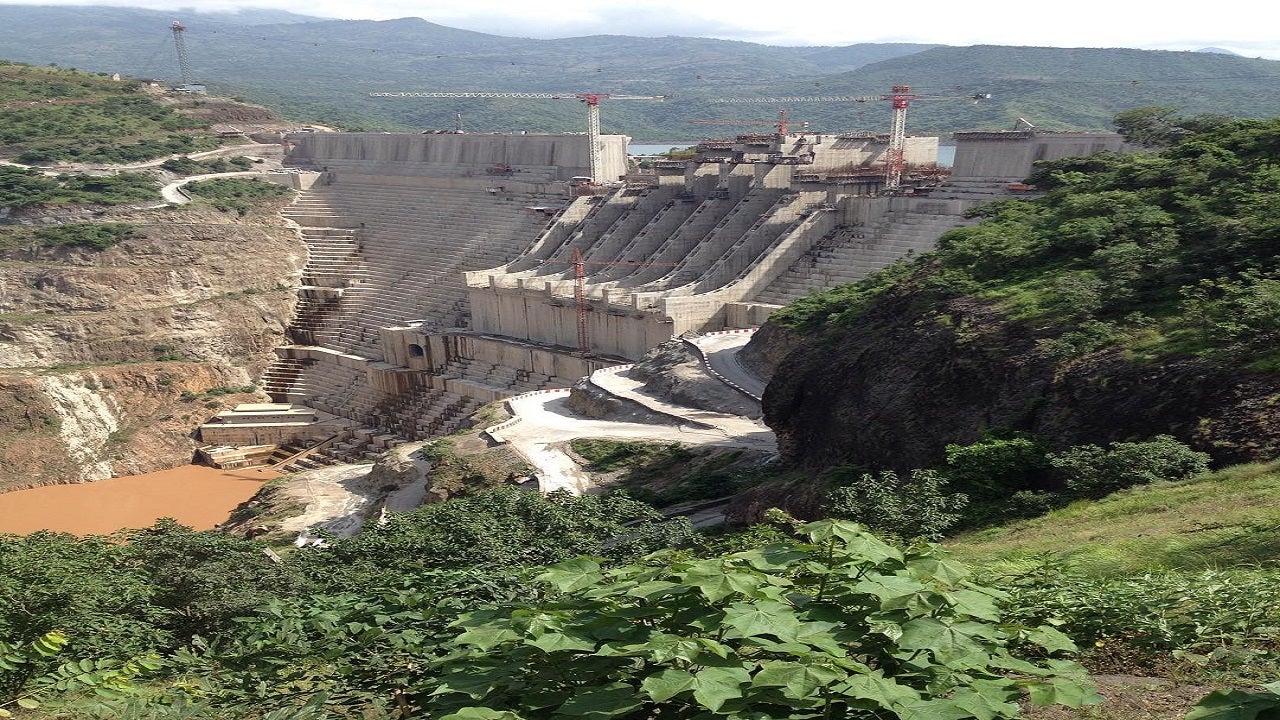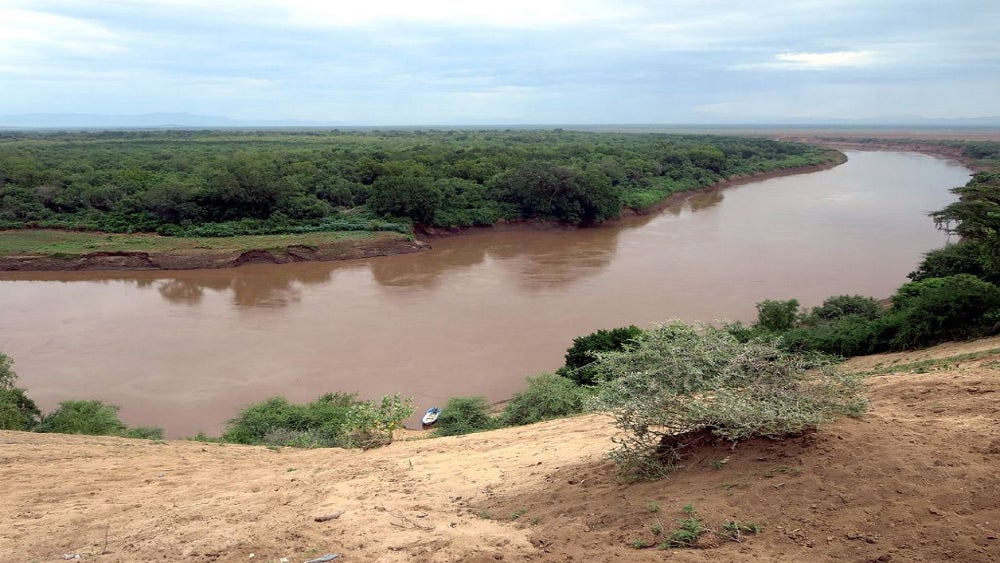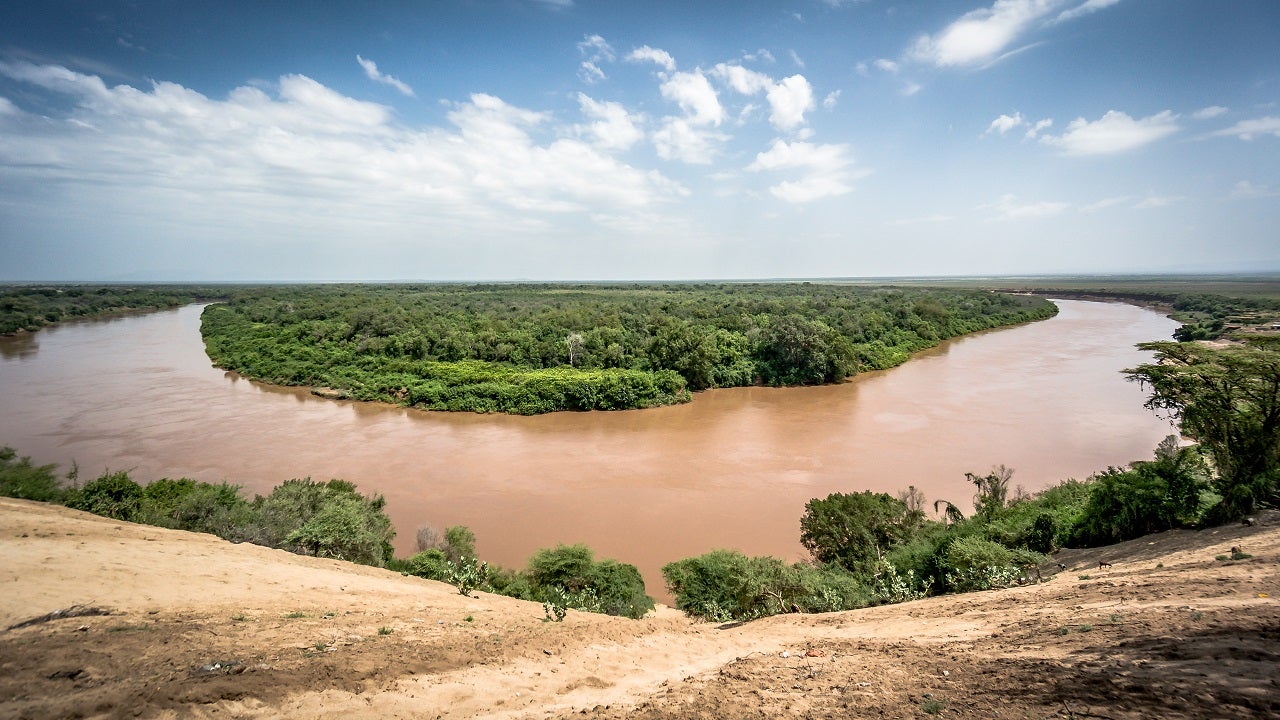The 1,870MW Gilgel Gibe III (Gibe III) hydroelectric power project was constructed on the Omo River in Ethiopia’s Southern Nations, Nationalities, and People’s Region State (SNNPRS). The project has an estimated production capacity of 6,500GWh a year.
State-owned public utility enterprise Ethiopian Electric Power Corporation (EEPCo) developed the project at a cost of €1.5bn ($1.83bn). The project was one of the biggest hydroelectric projects undertaken in Ethiopia at the time.
The project includes a 243m roller compacted concrete dam, the first of its kind in Ethiopia and one of the tallest in the world.
Gibe III was launched in July 2006, with the first unit starting its trial-running generation in September 2013. It was fully commissioned in December 2016.
Gibe III hydroelectric power project details
The Gibe III hydropower project is located within the Omo Gibe River Basin, approximately 450km south of Addis Ababa. It is used for floodwater regulation and maintenance, as well as power generation.
Gibe III enables Ethiopia to become self-sufficient in power generation and helps it export energy to neighbouring countries through a regional interconnection transmission system.
The 243m-high Gibe III dam has a crest length of 610m and was constructed at an altitude, ranging between 650m and 1,650m above sea level. Its reservoir has a total storage capacity of 14.7 billion cubic metres.
The surface powerhouse is located on the left side of the river and contains ten vertical-axis Francis turbines each with a nominal power output of 187MW. It also includes two power tunnels both 11m in diameter. Each tunnel is connected to five generator units using two penstocks and manifolds.
A switchyard is installed with ten step-up transformers of 200MVA to convert the voltage from 15kV to 400kV. It includes a double bus-bar scheme, linking five three-phase 400kV transmission lines.
Gibe III hydroelectric project construction
Major works at the project included the construction of the dam, powerhouse, and two diversion tunnels, as well as excavation of temporary access tunnels.
Other works included the construction of twin pumping tunnels, cofferdam, intake structures, horizontal tunnels, and four vertical wells and two distributors.
Financing
The Ethiopian Government provided approximately €448m through the EEPCo.
EEPCo and Tebian Electric Apparatus (TBEA) signed a $34m contract for the construction of the transmission lines in July 2009. Chinese EXIM bank provided 85% of the financing.
Power transmission from Gibe III
Power is transmitted to the national grid by two 400kV transmission lines. The first line of the double circuit is 50.3km-long, while the 51km-long single circuit second line transfers electricity from the Gibe III switchyard to Wolaita Sodo substation.
Contractors for construction and engineering services
EEPCo awarded a $1.7bn engineering, procurement, and construction (EPC) contract to Webuild (formerly Salini Costruttori), an Italian company. Webuild also signed an agreement for the construction of a 66kV electrical power line from the Sodo-Wolayta substation to the plant site.
Studio Pietrangeli was contracted by Webuild to provide engineering services for the feasibility study, basic design, final design, and technical supervision during construction.
A joint venture of ELC Electrocosult and Coyne Et Bellier acted as EEPCo’s representative for the quality control of the design and construction phases.
EEPCO hired Tractebel Engineering and ELC to review the design, assist in the EPC tendering, and act as the owner’s engineer for the project.
Shanghai Electric Group was awarded a contract for the design, manufacture, and commissioning of two 400kV substations at Wolayta Sodo and Akaki. It also included the extension work at the existing Gilgel Gibe-II and Sebeta-II 400kV substations.
Chinese company TBEA signed a deal to install power transmission lines running from Gibe III to the Wolayta substation.
ATB group supplied hydro-mechanical equipment for the power plant. Lombardi conducted special studies and preliminary studies for the project.






